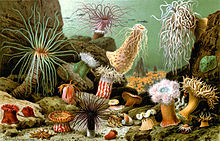





Disclaimer: Copyright infringement is not intended.
Context:
Details:
|
Sea anemones |
●It is an invertebrate aquatic animal marked by soft bodies and has an ability to sting. ●They are a group of predatory marine animals constituting the order Actiniaria. ●Because of their colourful appearance, they are named after the Anemone, a terrestrial flowering plant. ●As cnidarians, sea anemones are related to corals, jellyfish, tube-dwelling anemones, and Hydra. ●Unlike jellyfish, sea anemones do not have a medusa stage in their life cycle. ●A typical sea anemone is a single polyp attached to a hard surface by its base, but some species live in soft sediment, and a few float near the surface of the water. ●They are known to form symbiotic relationships with other animals; their most well-known alliance is with clownfish. ●They use nematocysts, which are specialized cells containing venomous organelles called cnidocysts, to capture prey and defend themselves against predators. Class: Hexacorallia Eats: True crabs Phylum: Cnidaria Scientific name: Actiniaria Domain: Eukaryota Kingdom: Animalia |
Source:
|
PRACTICE QUESTION Q. Consider the following statements about Sea Anemones:
How many of the above statements is/are correct? A.only one B.only two C.only three D.All four Ans: B |










© 2025 iasgyan. All right reserved